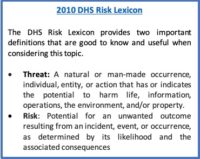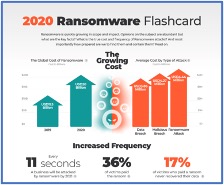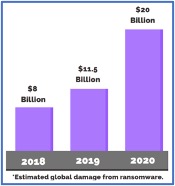If the headline looks familiar, well, that’s because it is.
Cannabis lounges, where patrons can smoke a joint, rip a bong, vaporize a dab or do just about anything else you can think of with the plant, appeared to be a certainty as part of a Las Vegas ordinance back in 2017—and then again in 2019. They’ve been talked about for over four years in the entertainment capital of America.
But this time around, after years of setbacks and political meddling from the rival gaming industry, a bill at the Nevada State Legislature is on track to settle the score once and for all.
Assembly Bill 341 would pave the way for an unlimited number of lounges to open across the state, in counties where local governments allow cannabis businesses to operate. That includes in Sin City, where over 40 million tourists visited each year before the COVID-19 pandemic.
“This would really open the floodgates for something marijuana users have wanted for a long time,” said Assemblyman Steve Yeager, a Democrat from Las Vegas who sponsored the bill. “And there’s a social equity part to it where we’re not restricting this just to licensed dispensary owners.”
Yeager, in his third term at the state’s biennial legislature, has felt the frustration himself. Long considered the heir apparent to former State Sen. Tick Segerblom, who was known as Nevada’s “Godfather of Marijuana,” Yeager watched as the fledgling industry offered all of its spoils to a tiny group of anointed business owners, most of whom were lawyers, doctors, casino operators, lobbyists and former public officials.
Less than 100 groups control almost all of the industry, as the state capped dispensary licenses from the adult-use program’s inception in 2017. Many of the companies are also vertically integrated, meaning dispensary owners also hold the lion’s share of production and cultivation permits. Disproportionately left out have been women and racial minorities, the latter group of which was most harmed by cannabis prohibition.
The new bill runs so contrary to the state’s years of meticulously restricting licenses and hand-picking operators that many dispensary owners are wondering if opening a lounge is even worth the investment.
“You have to figure out if you can make any money with them,” said David Goldwater, owner of Inyo, a dispensary located just over a mile from the Las Vegas Strip. “There’s going to be a ton of new competition.”
Goldwater, whose shop was one of the first dispensaries to open back in 2015, said he has no plans to open a lounge right away.
But those who plan to roll the dice on a new lounge say they plan to carve out a niche for themselves to survive. It’s not much different than other businesses in Sin City, which rely on gimmicks, glitz and glamor to earn visitors’ dollars.
Lissa Lawatch, general manager at Oasis Cannabis, is preparing a beach-themed lounge in hopes of luring tourists from the Strip a block away. Similar to the world-famous “beach clubs” found at a slew of neighboring resorts, the 4,000-square-foot cannabis lounge—set for an adjacent room next to the Oasis retail floor—plans to offer guests “a paradise in the desert.” That means live music, beach balls and seashell décor, among other tropical amenities.
“We’re going for a place that’s super chill so people can connect with their own vacation,” Lawatch said.
Anyone who buys cannabis at Oasis will be able to use the lounge, though Lawatch and company haven’t yet determined a time limit for their guests. Most prospective lounge owners plan to offer either a paid membership plan, where people can visit as often as they’d like, or a one-time entry with product purchases at the dispensary.
To make money, Oasis’ lounge will likely have a cover charge and rental fees for customers to use bongs and other paraphernalia, Lawatch said. Oasis also plans to cap the amount of time customers can hang out, so they’re not intoxicated when they hit the road.
“There’d have to be a limit, I mean, they even put limits on sushi bars,” she said. “You have to find a way to make sure people aren’t driving home roasted.”
Oasis is one of the few Vegas cannabis businesses located near the Strip. It opened in 2015 and was grandfathered through a 2017 regulation that banned cannabis companies from opening within 1,000 feet of a casino. Most other dispensaries are miles away from the famed Las Vegas Boulevard and consider at least 85% of their clientele to be locals.
Off-Strip dispensary reps believe lounges will be their golden ticket to finally reeling in more out-of-towners. Locals can legally smoke inside a private residence as long as they own it or have permission from their landlords. But tourists still have nowhere to go.
Instead of trying to discreetly consume in their rental cars, hotel rooms or on the street, visitors will opt for the peace and comfort of a legal consumption venue, the reps have said. The lounges will also benefit people in apartment complexes or housing where owners don’t allow cannabis.
“At its core this is a bill to decriminalize marijuana use in the state,” said Chris Anderson, a government relations rep for the Apothecary Shoppe dispensary in central Vegas. “The current bans can be seen as a form of discrimination against folks that have less means.”
The Apothecary Shoppe’s lobby resembles that of a quaint hotel, complete with tall wood-grain desks and formally dressed attendants to serve its guests. Fancy menu booklets, like those found at gourmet Italian restaurants, rest on the desks underneath bright reading lamps.
Instead of checking people into a resort, though, the uniformed budtenders offer their recommendations for marijuana products. The dispensary plans to offer a similar visitor experience for its planned on-site consumption lounge if A.B. 341 gets the nod from state officials.
In the increasingly unlikely event that the bill doesn’t pass, the Silver State already has one small lounge open. The Las Vegas Paiute Tribe, playing by its own set of rules that allow it to bypass state law, has operated a small “tasting room” inside its mega-dispensary on tribal land for a couple years. There, customers can try 0.3-gram blunts of flower, take a bong rip or inhale a single dab.
It’s just a sample of what’s to come, though, if state officials can be taken at their word.















